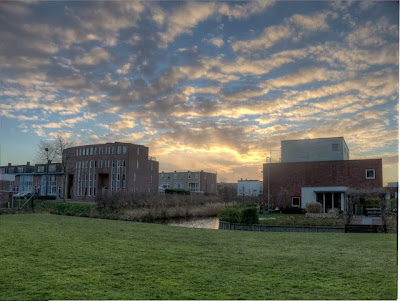... can it be done?!
Here I am, writing my first entry in my newly created photography blog. Of course I had to pick a rather controversial topic to start with, HDR photography.
History
The first encounter with HDR photography was in the photography club in my school, I was 14 years old to that time. We tried to learn and master Ansel Adams' technique which of course required a lot time spent in the darkroom playing with liquids. Of course, as soon as affordable digital cameras were made available, somewhat mid/end nineties, I had to have one... However, the fun was limited, since the quality was rather capped, etc.
Not having that much time any longer to spend shaking development tanks (my enlarger has not been used in more than 30 years by now), and seen the inferior lomography like quality of the digital images, photography turned into some "point and shoot" experience for the occasional snapshot.
Mid this year, I picked up my aging Canon EOS-350D (aka. digital rebel) and started playing with bracketed short in aperture priority mode. This experience is/was a mixed bag, however, a tripod appeared to be an absolute necessity. Of course, a tripod is somewhat cumbersome to carry about and also the camera, although one of the smaller DSLRs is not really handy for everyday use.
The Camera
Consequently, the decision was taken that a new camera was falling due. The choice fell on a
Panasonic Lumix DMC-LX7, initially mainly for the reason that it is able to do ±3EV bracketing.
Without knowing it yet, the basis of my decision seems the criterion for shooting handheld HDR.
Of course, the very fast Leica lens with an F-number of f/1.4 and the neutral density filter were very welcome features (BOKEH!!!).
There are some additional technical features to this particular camera which help a lot taking bracketed images w/o a tripod. The particularly interesting feature is the camera's ability to take 11fps bracketed shots in raw.
Now, lets have a look why this particular camera makes it possible to shoot bracketed images for HDR without a tripod.
Principles
What you are looking for in HDR is to collect the details in the lights and in the shadows, cf. Ansel Adams' "Zone System", which are lost in the your typical "correctly" exposed photo due to the limitation of the dynamic range of your recording medium.
In principle, what we are looking for in the
over exposed image is totally blown out lights and good texture in the darks. Concerning the
under exposed image, we are looking for entirely black shadow and good texture in the lights.
Experience
Mind you, I am relatively new to this. The photos shown below are at the beginning of my learning curve. Also, I try to display what I have seen myself, in other words, I try to keep colors at levels which I believed I have seen. Maybe, at some later stage, I might create those artsy color overloads which HDR is infamous for.
The following shots were taken with my handheld LX7 in "P" (ups! - details in the image captions). Shooting HDR brackets in "P"? Well... it was a mistake, I took some non-bracketed photos before and forgot to change all the settings. Of course, you want to shoot your images for HDR in "Av".
Those (raw) images are not treated at all, just scaled down and saved as jpg.
 |
| normal exposure - looks kinda odd (f/2.8, 1s/1600, ISO 80) |
 |
| overexposed - as expected (f/2.8, 1s/200, ISO 80) |
 |
| underexposed - not so much to see here (f/6.3, 1s/2500, ISO 80) |
Actually, seen that the camera decided to stop down the under exposed image at a very fast shutter speed, the use of the ND-filter might have been a good idea. Luckily, the aperture change did not influence the geometry of the underexposed frame.
It is evident that those images show the textures mentioned above. Of course, this is a cliché shot for HDR photography and yes, the composition is a little on the boring side, I admit.
After having mingled together the 3 raw photos, this is what my result is:
 |
| final HDR photo |
For obtaining the final result, anti-ghosting was used on the car. Other than that, I tweaked the colors, contrast and brightness a bit, using the GIMP. Essentially, I reduced color saturation and leveled out the image a bit.
Note the features highlighted in the following image. The details annotated in blue are results of the underexposed frame, while the features marked in red are a result of the overexposed contribution.
 |
| annotated final image |
You may notice that the grass is a little bit greener on the result than on the over exposed shot. I wanted to show more texture on the trees' trunks, hence, I boosted the over exposed data a bit. Of course I would have done that in masked layers, however, I decided to not apply any "special treatment" to the photo, in order to demonstrate pure HDR photography.
Personally, I am pretty pleased with the result, in particular since this is handheld HDR photography, which most folks say was impossible.

























